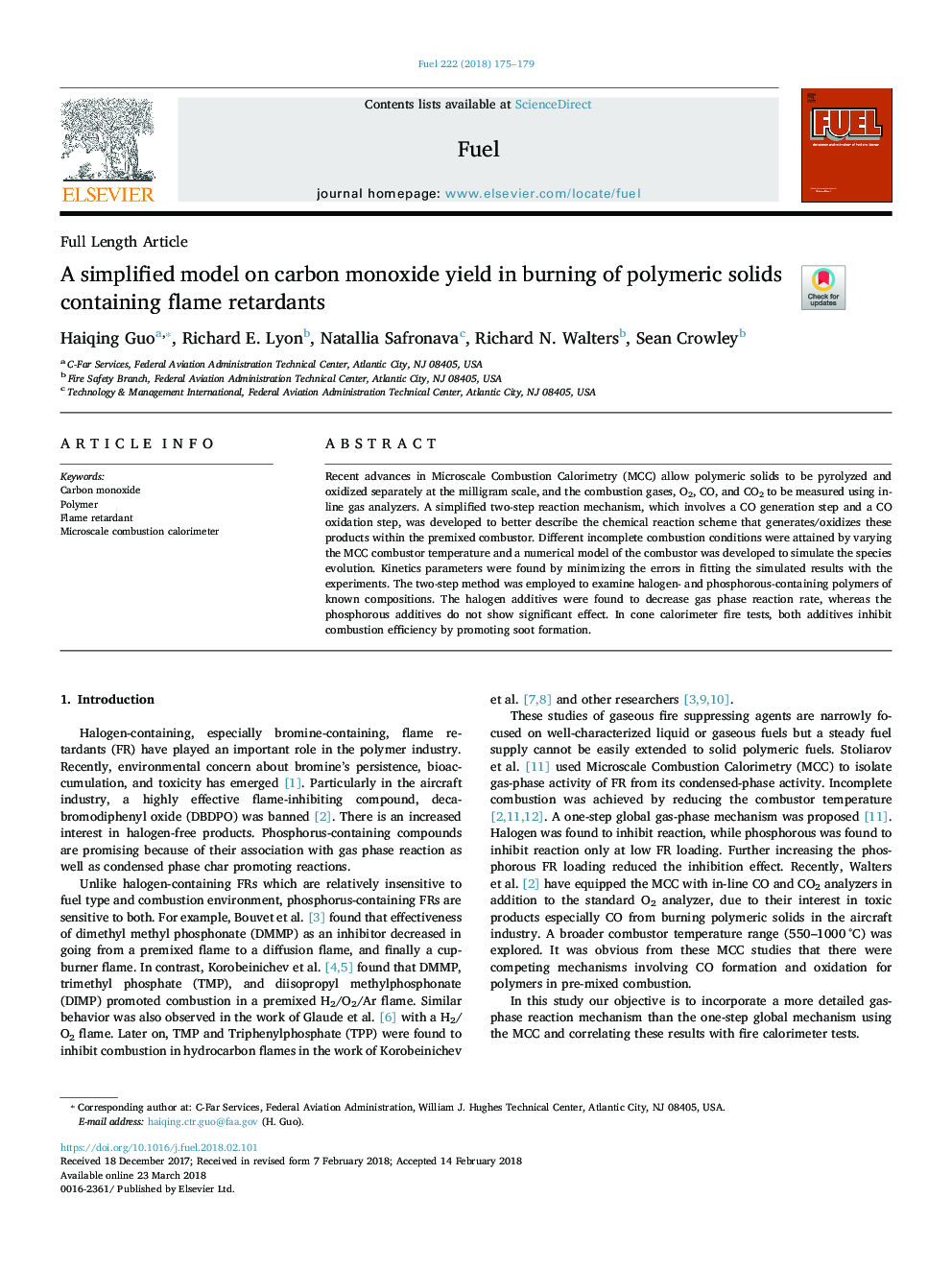| Article ID | Journal | Published Year | Pages | File Type |
|---|---|---|---|---|
| 6631491 | Fuel | 2018 | 5 Pages |
Abstract
Recent advances in Microscale Combustion Calorimetry (MCC) allow polymeric solids to be pyrolyzed and oxidized separately at the milligram scale, and the combustion gases, O2, CO, and CO2 to be measured using in-line gas analyzers. A simplified two-step reaction mechanism, which involves a CO generation step and a CO oxidation step, was developed to better describe the chemical reaction scheme that generates/oxidizes these products within the premixed combustor. Different incomplete combustion conditions were attained by varying the MCC combustor temperature and a numerical model of the combustor was developed to simulate the species evolution. Kinetics parameters were found by minimizing the errors in fitting the simulated results with the experiments. The two-step method was employed to examine halogen- and phosphorous-containing polymers of known compositions. The halogen additives were found to decrease gas phase reaction rate, whereas the phosphorous additives do not show significant effect. In cone calorimeter fire tests, both additives inhibit combustion efficiency by promoting soot formation.
Related Topics
Physical Sciences and Engineering
Chemical Engineering
Chemical Engineering (General)
Authors
Haiqing Guo, Richard E. Lyon, Natallia Safronava, Richard N. Walters, Sean Crowley,
